Democratizing Dance
An Interview with Pioneer Winter
BY EMMALY WIEDERHOLT
Note: This interview was first published in Stance on Dance’s spring/summer 2022 print issue. To learn more, visit stanceondance.com/print-publication.
Pioneer Winter is the choreographer and artistic director of Pioneer Winter Collective, based in Miami, Florida. Pioneer Winter Collective is an intergenerational and physically integrated dance-theater company rooted in social practice and community, queer visibility, and beauty beyond the mainstream. Here, Pioneer shares his belief that dance should not be exclusionary and how that is reflected in his company members and aesthetic. He also reflects on his repertoire and how his process evolves depending on the needs of the piece he is working on, as well as some exciting upcoming projects and programs.
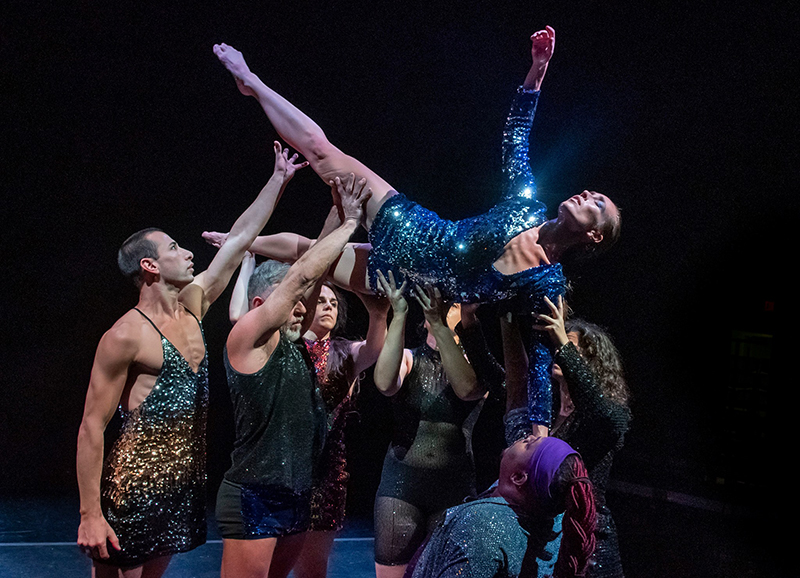
Photo by Katherine Richardson
~~
Can you tell me a little about your dance history – what shaped who you are today?
I grew up in a recreational dance studio, primarily studying tap, and then moved into ballet and modern. My early dance training was interrupted by the passing away of my mom. My dad didn’t know what to do with me, so there was a lot of jumping around from studio to studio. When I got into high school, I was doing modern dance, Haitian folkloric dance, and ballet.
I grew up in a studio where I was the only white kid. I rarely saw dance performed by white bodies until I was in high school. There was never a question of who could do ballet because we all did. That was also the first studio where I started teaching dance. I guess what I’m trying to say is I had an early experience with dance that wasn’t like a conservatory training in one aesthetic or genre. It was about learning to dance in order to be a good human and a well-rounded person.
It wasn’t until I graduated high school, finished my bachelor’s degree in Psychology, and was finishing my master’s degree in Public Health and Epidemiology that I even considered choreography. Before that, I was dancing for project-based contemporary dance and dance-theater companies in southern Florida. I went to Miami City Ballet and North Carolina School of the Arts somewhere in there for brief moments. My dad didn’t want me to go into dance, and because I excelled in academics, he didn’t expect me to. Even I thought I was going to get a PhD in Neuroscience before I realized the lab I like most is the studio.
I was interning at a place called Alert Health which is now closed but did HIV and STD testing, and they were my fiscal agent for my first grant that I applied to the county for. The piece I created reflected on HIV stigma. I was so close to it in my day job, and I was looking for something that would inspire me choreographically. That was my first piece, it was 2010. It was called Reaching the Surface. It was nascent work, but the performers got paid. I still write my own grants.
There was a dancer in our group who tested positive for HIV. I wonder what would have happened if they had tested positive and hadn’t been involved in a project that was seeking to reduce stigma. I felt the project was there for a reason. I realized I was interested in looking at dance not through the lens of entertainment, but through the lens that dance can be cathartic and be used to confront topics that are difficult to have conversations about, but body-to-body, we’re able to.
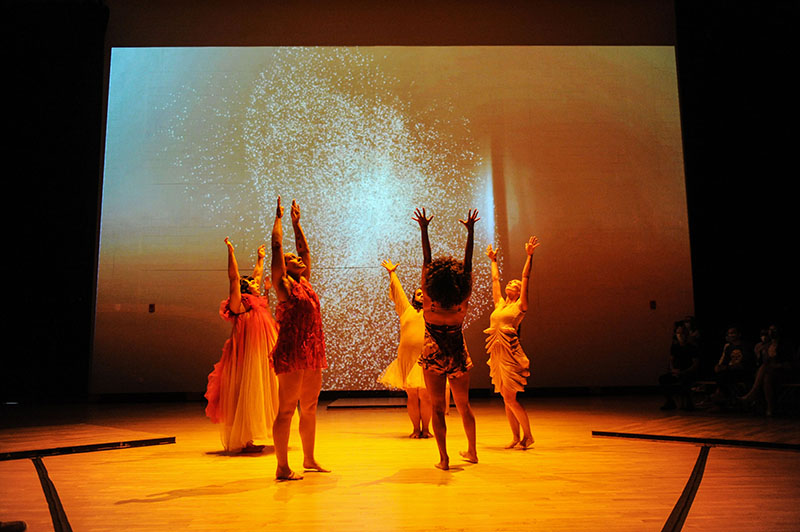
Photo by Ryan Troy
How would you generally describe your work to someone unfamiliar with it?
We create out of necessity. If the piece needs to be a tap dance in a bathroom stall, then it’s a tap dance in a bathroom stall. (That piece was called Glory Tap.) Or if the piece needs flamenco and stepping, we’ll use it, like in Reprise. We mostly use a contemporary dance and dance-theater vocabulary. I’m influenced by the work of Pina Bausch, Lloyd Newson, and Bill T. Jones.
The work is gritty and image focused. I approach it as visual art, so the image is very important to me. I often start with an image that I’ve either seen or have in my head, and work backward, asking, “What needs to happen?” We use a lot of prompts and tasks, or ask, “I wonder what would happen if…” The work requires curious and open collaborators who can get just as obsessed as me about what we’re making together.
Can you share how your intergenerational and physically integrated dance-theater company, Pioneer Winter Collective, came into existence?
I grew up saying everybody dances. Dance is social. There are entire enterprises dedicated to people socializing, drinking, and dancing, and those don’t have restrictions. Why should we be exclusionary?
Experience has never been a precursor for me; I have highly trained dancers in my company, and I have dancers who are primarily vocalists or drag performers. In 2019, I created a 20-minute solo on a 13-year-old basketball player. I don’t play basketball, but we were able to develop a vocabulary using his prodigious basketball technique. We just named things and created orders. That’s how I work with my company: we create a vocabulary for the piece that stems from the bodies in that room.
We are project based, so I acknowledge the performers have other sources of work, might dance for other people, or might have their own projects. In the next chapter of a piece we recently premiered, Birds of Paradise, five of the eight performers are continuing, and four are new. I’ve had terrible luck with auditions. Either I’m not good at knowing what I want, or people put out a certain vibe in an audition that they can’t sustain in the long term. I try to work around availability. The Collective manifests through the shared experience of creating this work together.
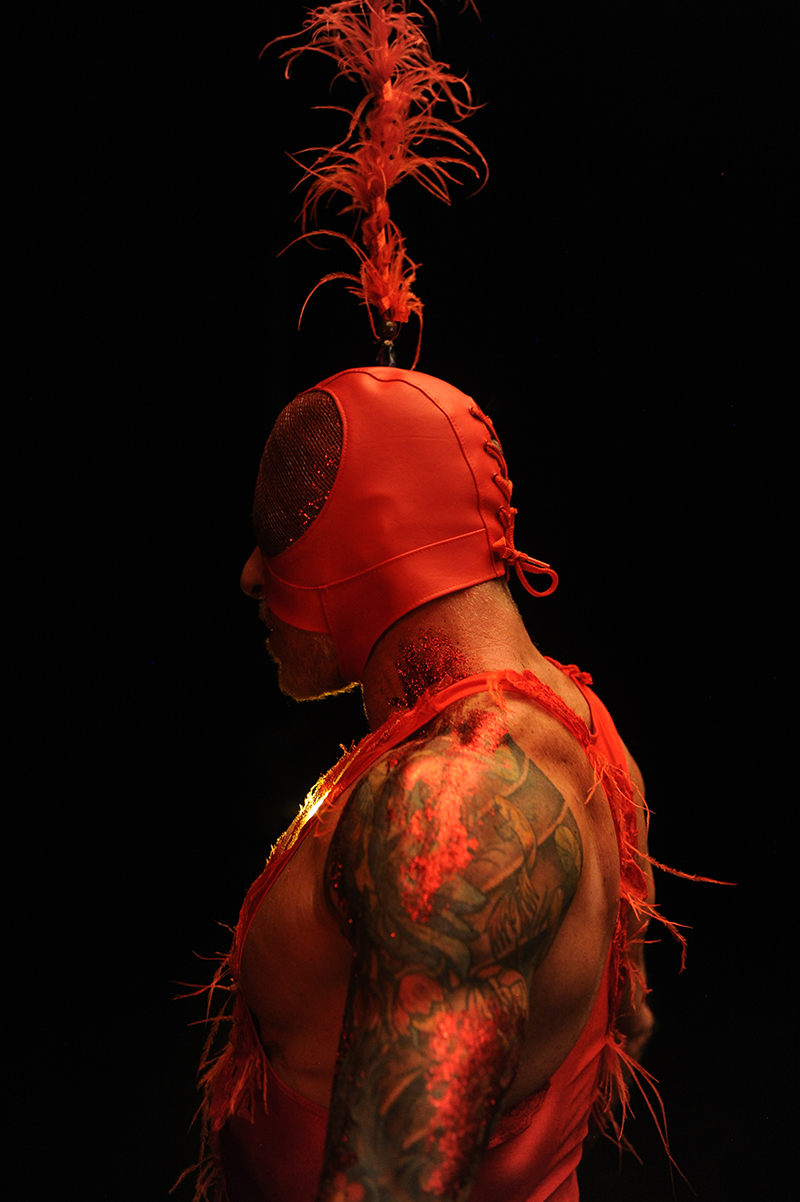
Photo by Ryan Troy
On your website, it says your company is “rooted in social practice and community, queer excellence, and beauty beyond the mainstream.” Can you share what that means to you and how it plays out in your work?
There’s catharsis, but we’re creating art together, and it’s not only for the people in the room but also for the people we share the work with. That keeps us from meandering into self-indulgence. Even though I try to create a horizontal hierarchy, ultimately I’m the artistic director, but I’m also not about to let anyone go onstage and do something they don’t want to do. In that way, all my performers are collaborators and have agency. The work wouldn’t look the way it does if it was with different people. I create with the bodies in the room, not with bodies I imagine. I even try not to demonstrate as much as possible so as not to imply I want something in particular.
Recently, we were supported by the Mellon Foundation in a three-year cycle, so I have devised a retainer program for performers who want to go beyond performing. I’m able to provide them with income outside the scope of a project, so they are guaranteed income. All they have to do is one activation beyond the research we’re doing in the company, whether that’s a panel, a workshop, or a solo in their own practice.
Can you share more about a couple of your projects in your repertoire that felt important or pivotal in your development as an artist?
Gimp Gait was the first time I created a physically integrated duet. I was commissioned by Karen Peterson to create a duet between me and Marjorie Burnett. I didn’t want to fall into the trap of tropes and focus more on the wheelchair than the person in the wheelchair. In some physically integrated dance, there are tricks being done by the able-bodied dancer while the person in the wheelchair almost becomes a backup dancer. Marjorie’s wheelchair was a powerchair, so it made it easy for me to say, “What if we don’t use the wheelchair and I just support you in walking the entire time, and wherever you lead, I follow?” Marjorie would direct where we would go and how we would move, and I would support her, so always trailing behind her a little bit. That taught me a lot.
Reprise, which was a piece about allyship, authority, and performative allyship, was pivotal in what got me the opportunities I have at this moment.
Birds of Paradise premiered in 2021 and was a big change. It taught me I can’t push against what the universe wants, and what I think I want a piece to be isn’t what it needs to be for me. Birds of Paradise was supposed to be about assemblage, drag pageantry, and protesting, and I wanted it to be in sync. This was the first time I had received national support through the National Dance Project and MAP Fund, and then COVID happened, but also, I didn’t do well with selecting performers. Out of five new performers, only one have I continued to work with. Throughout the pandemic, there was a lot of stop and go on Zoom, and it was becoming a heartache. So we took a break and resumed in January right before the vaccines became available. We were not the same people we had been a year prior. The piece became a series of solos about navigating this moment in time as a constellation of bodies and people who are all dealing with their own shit. It’s about transformation and rebirth, as well as honoring the individual rather than trying to create some generalized way of doing for the sake of being in sync.
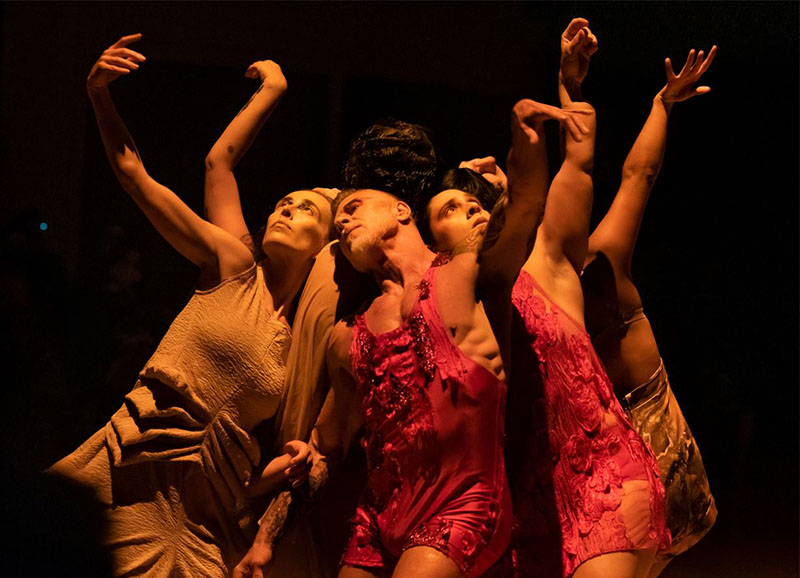
Photo by Mitchell Zachs
I read that Pioneer Winter Collective is the only professional dance organization in Florida that focuses on LGBTQ people. What has been your experience basing your company in Florida, especially in the context of the state’s divisive politics?
We’re inclusive, so the straights can join too, but the LGBTQ focus of the company means we’re primarily made up of queer folks. I’m queer. Even though the arts are already queer because many performers are queer, you don’t see it in the art that’s made, particularly in traditional mainstream work like classical ballet and Broadway. You see a lot of heteronormativity and pretending on stage. In my work, I need you to just be yourself. In Florida, there are a lot of companies that do LGBTQ projects, but we’re the only one that has that loud and queer focus year-round.
We performed Reprise at the Norton Museum of Art in West Palm Beach, which has a demographic that is very old, conservative, wealthy, white, and straight. We had an audience of anywhere between 150 and 300 people as we performed in the atrium. They didn’t care if they ‘offended’ us in the Q&A, and as a result, it was one of the best we ever had.
Your company’s mission is “Democratizing performance through the unexpected.” What does that phrase mean to you?
Unexpected bodies. Unexpected places. Unexpected social change. When people go to see dance, they expect to be uplifted, to feel some sense of relief, or purely have curiosity. But with democratizing through the unexpected, we’re hoping people come away with something that is more than they thought they were going to get.
Democratizing the creative process. Knowing when to rest and knowing when to push. Experimenting and trying things for the first time. Those are all things that are important to me.
Do you have an upcoming project or focus you want to share more about?
I’m continuing to develop Birds of Paradise and we’ll be performing it soon in Miami. The idea behind Birds of Paradise is there are 42 species of birds of paradise, and that’s the expansiveness of queer identity. I’ve set an aspirational goal of creating 42 solos. I have nine so far.
I just received a Creative Capital grant for a new work called DJ Apollo that will premiere at the end of 2023 or in 2024 and that looks at aging and relevance through the lens of if the Greek god Apollo was a DJ who had been relegated to some leather bar in Hades, or even worse, is having to DJ for mortals. It’s kind of punk, queercore, and deals with HIV because of the time we’re looking at in the late 80s. The piece will focus on queer elders, kinship, music, and how a DJ can choreograph a party and control heartbeat.
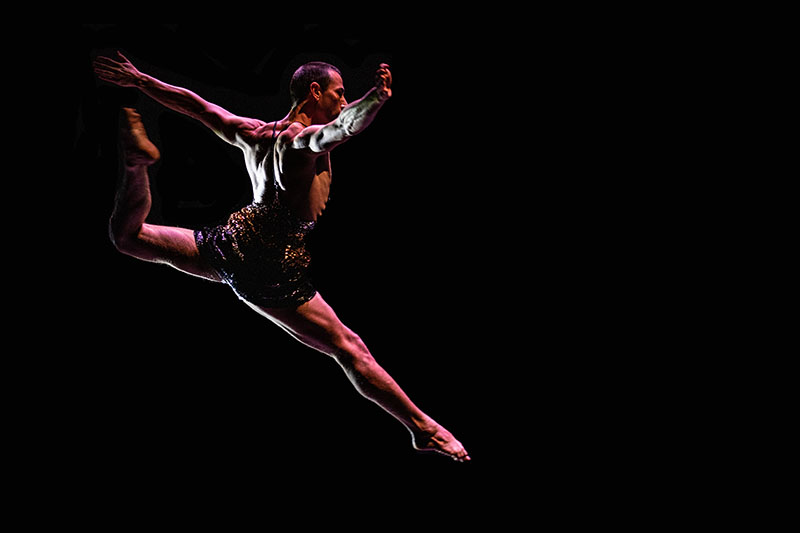
Photo by Katherine Richardson
~~
To learn more, visit pioneerwinter.com.
Note: This interview was first published in Stance on Dance’s spring/summer 2022 print issue. To learn more, visit stanceondance.com/print-publication.
